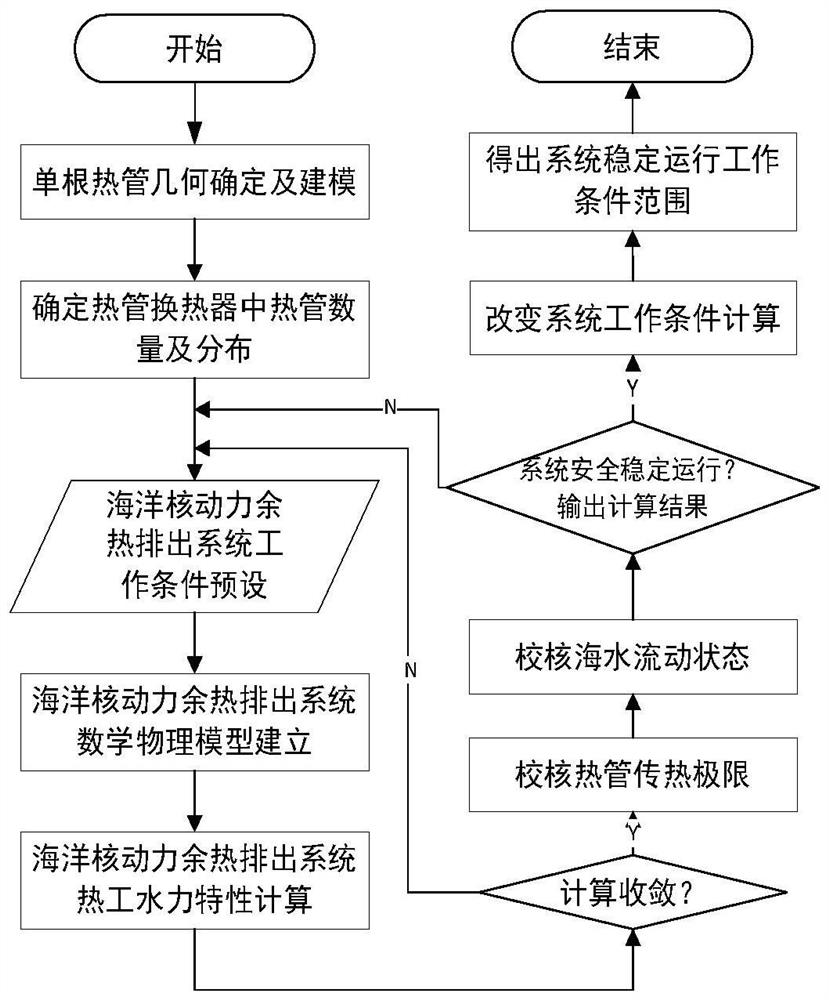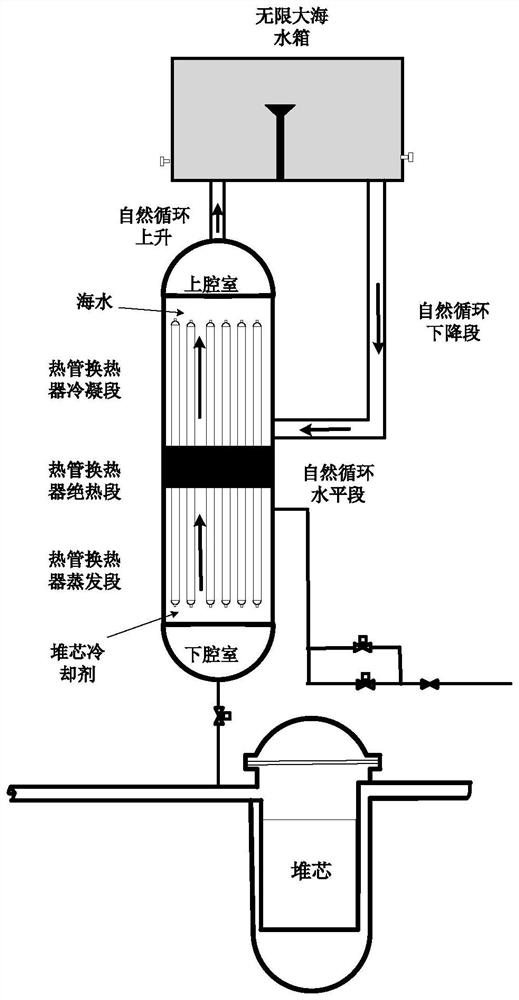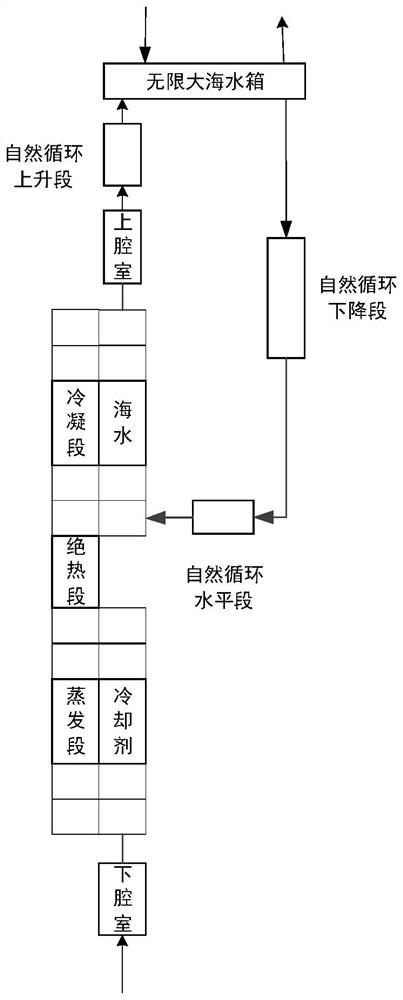Marine nuclear power heat pipe type waste heat removal system stable operation condition analysis method
A waste heat removal system and stable operation technology, applied in nuclear engineering, nuclear power generation, reactors, etc., can solve problems such as insufficient passive power, danger, fluid circulation requiring power, etc., and achieve the effect of avoiding water hammer effect.
- Summary
- Abstract
- Description
- Claims
- Application Information
AI Technical Summary
Problems solved by technology
Method used
Image
Examples
Embodiment Construction
[0139] The present invention will be described in further detail below in conjunction with the accompanying drawings and specific embodiments.
[0140] Such as figure 1 As shown in the present invention, a method for analyzing the stable operating conditions of a marine nuclear power heat pipe waste heat removal system, the steps are as follows:
[0141] Step 1: The schematic diagram of marine nuclear power heat pipe waste heat removal system is as follows figure 2 As shown, its working principle is: in the shutdown or accident state of the pressurized water reactor, the coolant in the primary circuit of the core flows through the evaporation section of the heat pipe heat exchanger, and the heat is transferred to the condensation side of the heat pipe through the latent heat transfer zone inside the heat pipe, while The natural circulation of seawater outside the condensing side effectively takes away the heat, and the coolant that takes away the heat from the heat pipe heat e...
PUM
 Login to View More
Login to View More Abstract
Description
Claims
Application Information
 Login to View More
Login to View More - R&D
- Intellectual Property
- Life Sciences
- Materials
- Tech Scout
- Unparalleled Data Quality
- Higher Quality Content
- 60% Fewer Hallucinations
Browse by: Latest US Patents, China's latest patents, Technical Efficacy Thesaurus, Application Domain, Technology Topic, Popular Technical Reports.
© 2025 PatSnap. All rights reserved.Legal|Privacy policy|Modern Slavery Act Transparency Statement|Sitemap|About US| Contact US: help@patsnap.com



